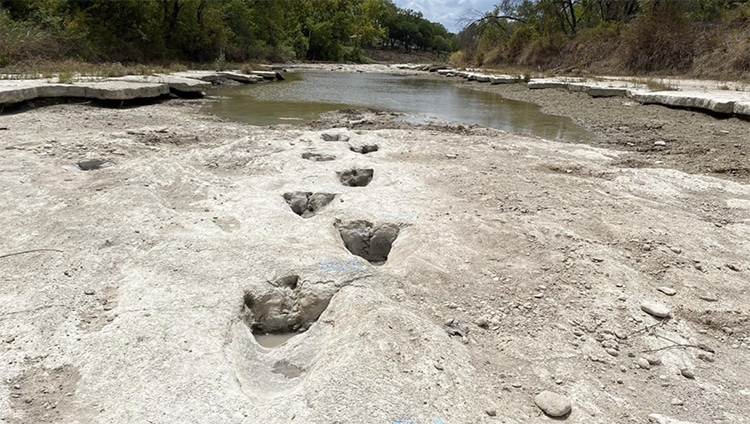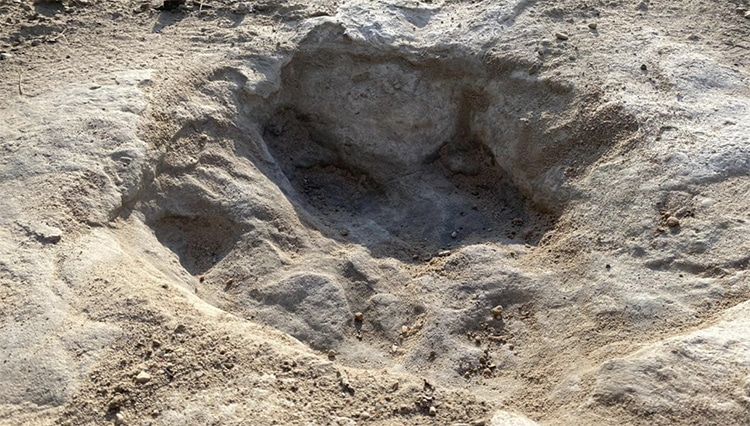This has caused rivers to recede, including the Paluxy River, which runs through theDinosaur Valley State Park.
As the water levels fell, they exposed dramatic 110-million-year-old footprints left by an ancient dinosaur.
Dinosaur Valley State Park is located nearby the city of Glen Rose.

Photo: Dinosaur Valley State Park
Millions of years ago in the early Cretaceous Period, countless dinosaurs tramped through the track sites.
They left fossilized footprints behind.
Some are from theropods (three toed) and others from sauropods (a class of four-legged dinos).

Photo: Dinosaur Valley State Park
Discovered in 1909, the prints are visible when the water levels fall.
When the water is higher, silt, mud, and river water obscure the prints.
The sets of prints recently exposed are those of a theropod with enormous claws.

Photo: Dinosaur Valley State Park
Its enormous three-toed feet left 1-foot-long prints in the mud.
Left behind in the riverbed, the tracks look almost as if they were made yesterday.
With rain predicted soon, the tracks may once more vanish beneath the river.
However, the sight of them is one silver lining to a rough summer in Texas.